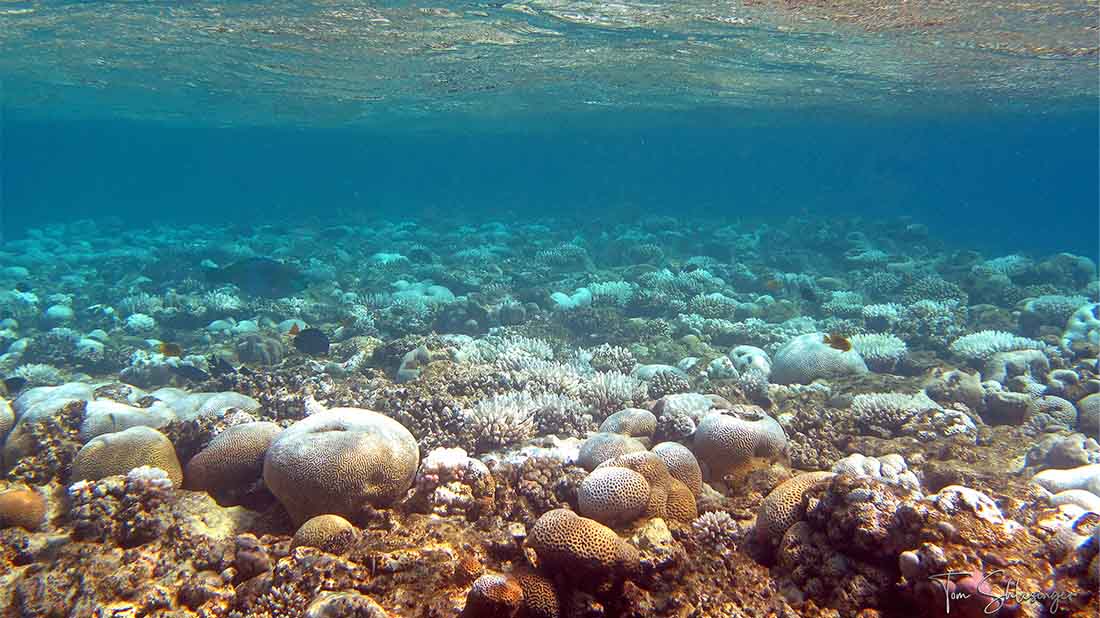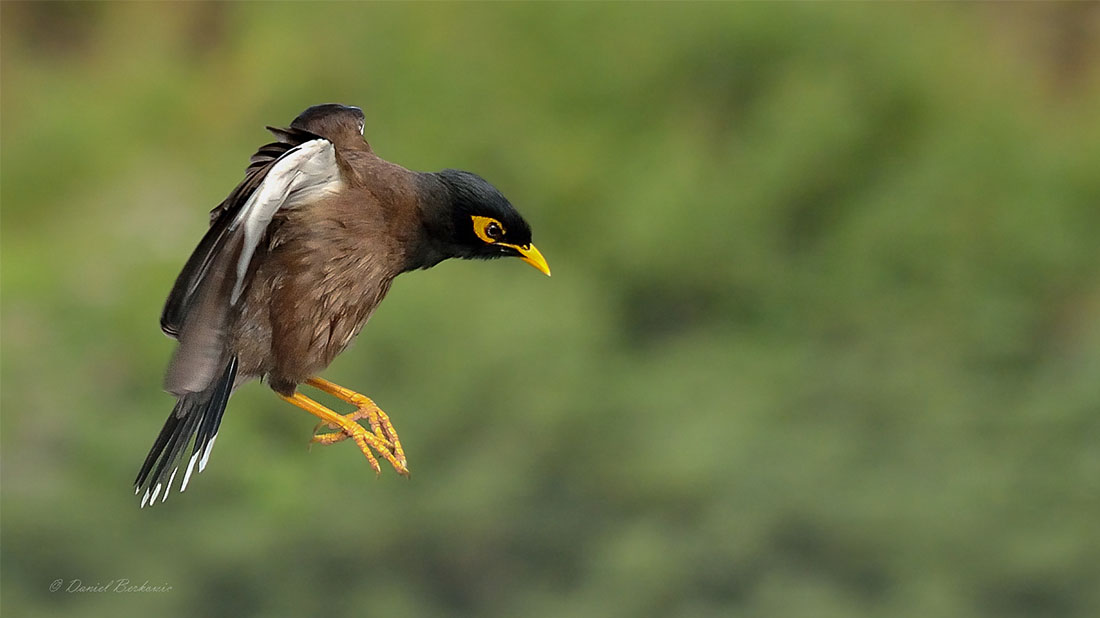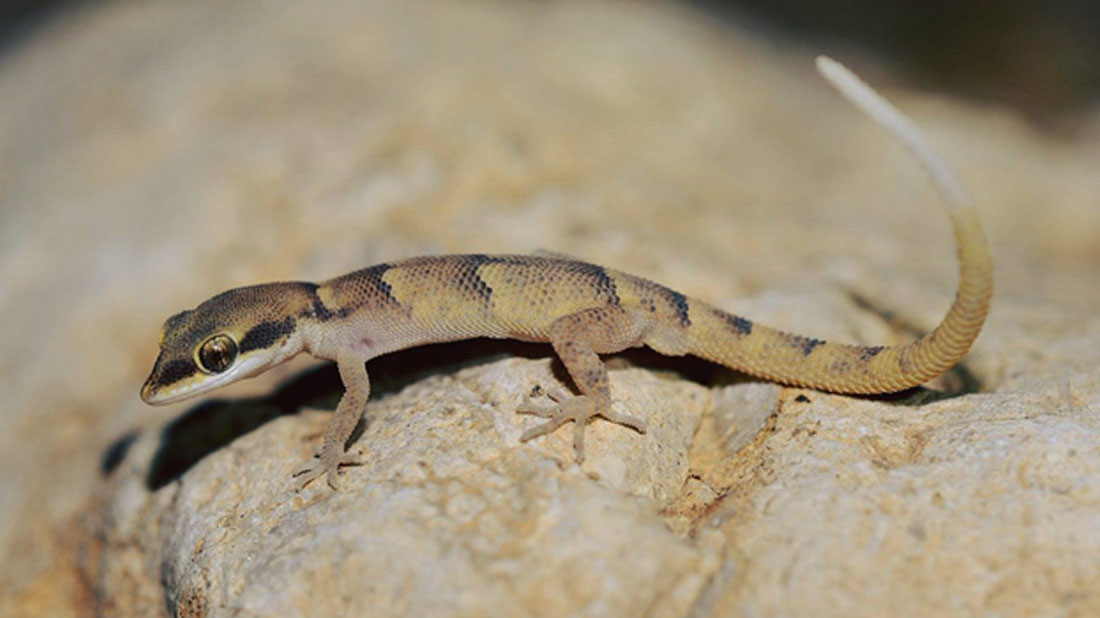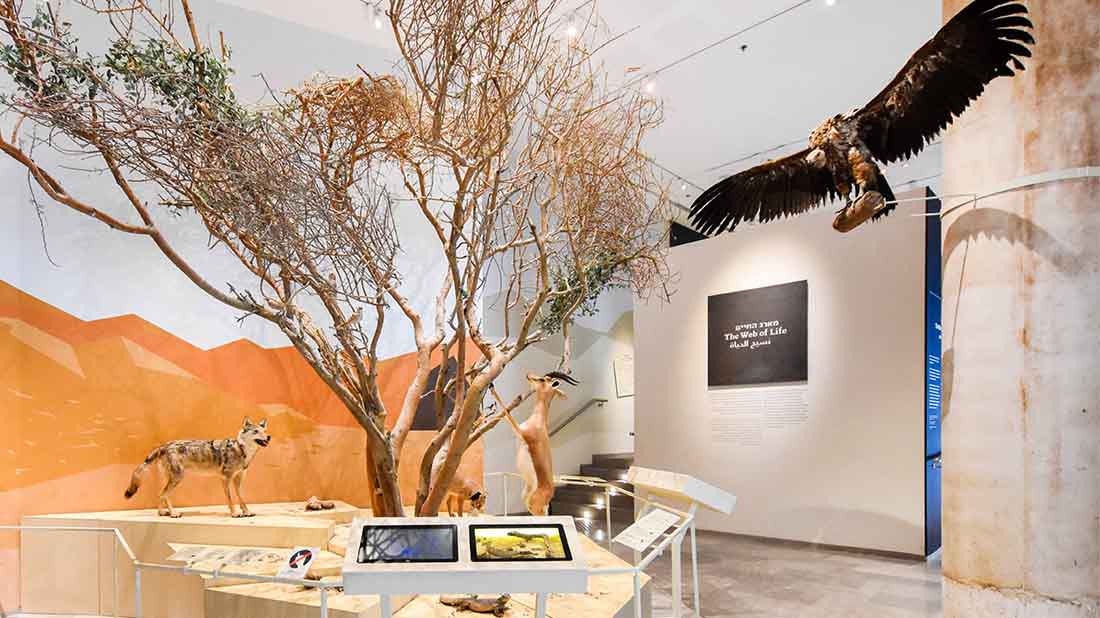If you go diving on the Great Barrier Reef in Australia you’ll probably encounter a particularly sad sight – massive coral bleaching. Why does it happen? Why should it concern us? How is it connected to the state of the reef in Eilat? What can science offer?
The article was written with the assistance of:
Dr. Tom Schlesinger, Florida Institute of Technology, USA, who will shortly be appointed as a senior faculty member at the School of Zoology and the Steinhardt Museum
Dr. Omri Bronstein, from the School of Zoology and the Steinhardt Museum of Natural History; curator of the Echinoderm Collection at the Museum
Stony corals are animals with a hard limestone skeleton that produce spectacular colorful structures called coral reefs. The corals’ main sources of food and energy are symbiotic algae that live inside the coral tissue. When the corals are under stress, the ancient symbiosis with the algae breaks down. The symbiotic algae, which also give the corals their color, are released from the coral tissue, and the white limestone skeleton can then be seen through the transparent, thin coral tissue. This is why the phenomenon is called “coral bleaching”. Severe or long-term coral bleaching may lead to widespread death of many corals. Coral bleaching may be caused by various natural stress factors or by a range of disturbances related to human activity, but massive bleaching and death events, which have increased in recent decades, are caused mainly by global warming.
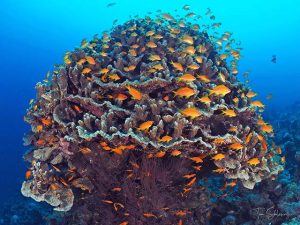
The incredible coral reef in the Gulf of Eilat. Photo: Dr. Tom Schlesinger
How does the climate affect the corals?
Every living organism has an optimal temperature range suitable for its needs; deviation from this range may lead to stress. In fact, corals currently live in temperatures very close to the top end of their optimal temperature range, thus even slight warming of one or two degrees is enough to cause kilometers of coral reefs to bleach and even die. The current climate crisis has caused the world’s oceans to warm by about 0.7°C on average, since 1960. This may not sound dramatic, but for the corals it’s a significant change.
The bleaching event that we are witnessing in Australia is already the fourth of its kind in the last six years! We’re talking about a period of weeks to months in which hundreds of kilometers of reef and many corals of various species bleach; some of them may subsequently die. The results may be devastating: the death of such a large number of corals may throw the entire ecosystem off balance and cause its collapse, as well as the disappearance of the many animals that depend on it. When death occurs naturally, at a balanced rate, space opens up for new individuals as part of an ongoing process; however, in the case of bleaching, we’re talking about rapid, extensive mortality which includes, among other things, many decades- to centuries-old corals, which cannot be replaced quickly.
Coral reefs are not just a uniquely beautiful tourist attraction. They also play an important role in protecting the coastline from erosion by waves and storms (this is the origin of the name of the coral reef along eastern Australia: the Great Barrier Reef). When the coral reef suffers severe damage, the new corals cannot grow fast enough to protect the coastline from rising sea levels and tropical storms, two processes that are becoming more frequent and intense due to ocean warming and melting glaciers.
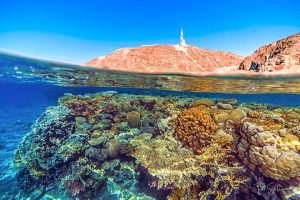
The incredible coral reef in the Gulf of Eilat. Photo: Dr. Tom Schlesinger
Can the solution be found here in the Gulf of Eilat?
The unique geological and climate history of the Red Sea has led to a situation in which the corals in the northern Red Sea are more resistant to high temperatures than corals in other places around the world. Dr. Tom Schlesinger, who is currently conducting post-doctoral research in Florida, has analyzed world trends in coral bleaching over recent decades. Similarly to results from previous studies, Schlesinger’s research shows that in the northern Red Sea, mainly in the Gulf of Eilat and in Aqaba, there have been almost no significant bleaching events to date. But this does not mean that the corals don’t face any threats. The rate of warming in the Gulf of Eilat is faster than the average global rate of ocean warming (the Gulf water temperature is increasing at a rate of about 0.3°C per decade!), in addition to other risks, such as different sources of pollution.

This bleaching map presents the severity of coral bleaching events throughout the world during the last four decades. The figure was taken from the article: “Coral-bleaching responses to climate change across biological scales”, published in 2022 by van Woesik et al. in Global Change Biology
How can science help protect the corals?
Various studies around the world have tried to make use of the resistance of corals such as those living in the Gulf of Eilat. One method, called “assisted evolution” tries to create artificial directed selection by locating coral colonies resistant to high temperatures and creating more resistant progeny. Another method, “probiotics for corals”, tries to inoculate corals with symbiotic algae and certain bacteria, which improve the corals’ resistance to high temperatures. Although these studies advance our understanding of the biology of the corals and methods to protect them, these methods are under contention within the scientific community due to ethical-environmental issues related to human intervention in natural, evolutionary processes.
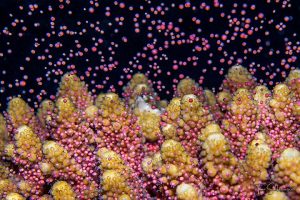
The synchronized reproduction of corals. A coral of the species Acropora gemmifera at the moment of broadcast spawning, releasing massive numbers of sperm and eggs into the open sea. Photo: Dr. Tom Schlesinger
A method that has merited increasing research attention in the last decade is the study of deep coral reefs. These studies have promoted the idea that deep reefs can serve as a refuge for corals in the face of climate change and bleaching events, since temperatures are lower in the deep water. But just as corals, and animals in general, require a precise temperature range, they also have preferences for light and other environmental conditions. This means that the species living in the deep are not necessarily the same species living in the shallow environment, which may currently be facing a greater risk of bleaching. Thus, it’s not clear to what extent the deep corals can contribute to the regeneration of damaged shallow reefs.
Dr. Omri Bronstein’s lab at the Steinhardt Museum studies, among other things, the theory of the deep sea as a refuge for corals and other species, by developing molecular genetic tools for analyzing the connectivity between deep and shallow populations. In other words, scientists are examining whether there is a genetic link between a population living in shallow water to individuals of the same species living on the deep reef. The research in Omri’s lab also focuses on developing tools for genetic monitoring of reproductive cycles in the sea. Corals, like other marine animals, reproduce by synchronized release of sex cells into the water, where the sperm cells fertilize the eggs. In this study, scientists are trying to answer questions such as: How long do coral sex cells live in the marine environment? What distance can they cross? Do the planulae (that developed from the fertilized coral cells) settle randomly? The answers to these and other questions have great importance for our understanding of the ecology of coral reefs and the process of planning the steps required to protect these unique natural assets.
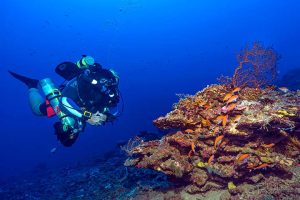
Researcher diving on the deep coral reef (about 60 m) in the Gulf of Eilat. Photo: Dr. Tom Schlesinger
Despite the attempts to create artificial resistance of corals to rising temperatures or to understand the role of deep corals as a refuge, the main way to guarantee the future existence of this incredible ecosystem, the coral reefs, is to reduce greenhouse gas emissions. This reduction could slow down, and even stop, global warming. We are at a point in time when there is still much to save. The reefs that have survived until now, like the reef in the Gulf of Eilat, give hope and an excellent reason to keep fighting until we manage to slow down or stop the climate crisis.


